READY TO GET STARTED?
REQUEST A FREE ESTIMATE
Fill out the form below or call (888) 466-7849 for a free, no-obligation estimate.
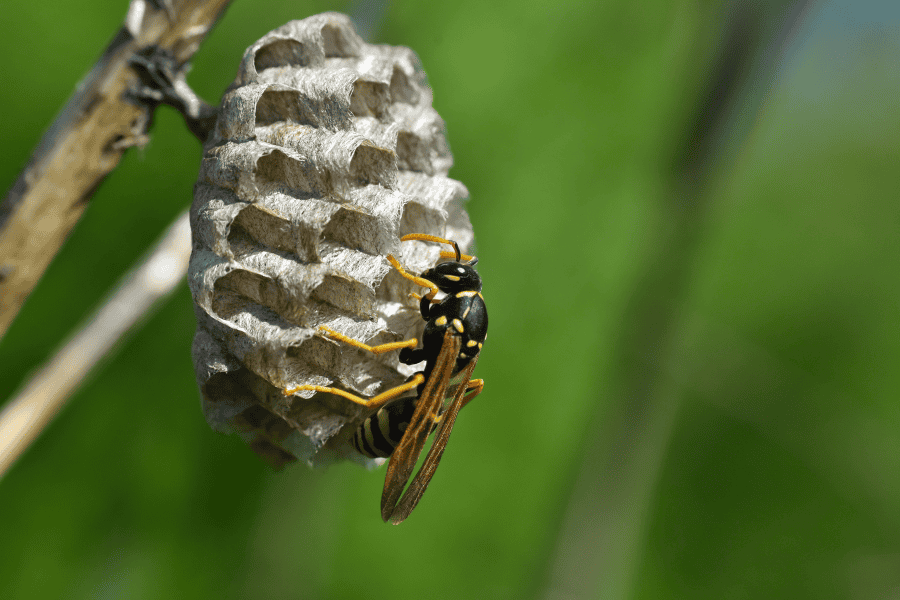
Paper wasps are a common sight in Georgia, particularly during the warmer months. While they play a beneficial role in the ecosystem by controlling pest populations, their aggressive behavior at certain times of the year can make them a significant threat to humans and pets. Understanding when paper wasps are most aggressive and how to keep them away from your property is crucial for maintaining safety and peace of mind.
Paper wasps are part of the “social wasps” category, meaning they live in colonies and work together to build nests, care for their young, and protect their community. These wasps are often confused with yellow jackets due to their similar size and appearance, but there are key differences in behavior and nesting habits to consider in the “paper wasp vs yellow jacket” comparison.
Unlike yellow jackets, which build underground nests, paper wasps construct open, umbrella-shaped nests from chewed wood and saliva, which hardens into a papery material. These nests are commonly found hanging from eaves, porch ceilings, tree branches, or other sheltered locations around your home.
Paper wasps tend to be most aggressive when they feel their nest is disturbed. This heightened defensiveness typically occurs during late summer and early fall when their colonies are at their largest, and they are working hard to prepare for winter. During this time, the queen, workers, and developing larvae depend on one another for survival, making the wasps especially protective of their home.
While these wasps are generally less aggressive than yellow jackets, their stings can still pose serious risks. A paper wasp sting is not only painful but can also trigger severe allergic reactions in some individuals. Unlike bees, which die after stinging, these wasps can sting repeatedly, making encounters with them particularly dangerous.
The life cycle of paper wasps directly influences their activity levels and behavior. Here’s what you can expect throughout the year:
In the spring, overwintered queens emerge from hibernation to establish new colonies. This is when paper wasps are least aggressive, as they are focused on building their nest and laying eggs.
By summer, colonies are growing, and the wasps are busy foraging for food to feed the developing larvae. While they are not inherently aggressive during this period, any perceived threat to their nest can provoke defensive behavior.
As the season transitions into fall, colonies reach their peak size. This is when the wasps become highly aggressive and protective of their nests. With winter approaching, their food sources begin to dwindle, which can also make them more likely to scavenge around your property, increasing the chances of encounters.
Most of these wasps die off as winter arrives, leaving only the fertilized queens to hibernate until spring. During this time, you are unlikely to see any activity.
Although paper wasps play an essential role in controlling other pest populations, their stings pose several dangers:
Preventing paper wasps from nesting around your home requires a proactive approach. Here are some steps you can take:
Regularly inspect your home for cracks, gaps, and openings where paper wasps might enter. Seal these areas to prevent them from nesting inside wall voids, attics, or sheds.
Even though paper wasps do not reuse old nests, leaving them in place can attract other pests. Safely remove and dispose of abandoned nests during the winter months when wasps are inactive.
Paper wasps are attracted to sweet foods and protein sources. Keep trash cans tightly sealed, clean up outdoor food and drink spills promptly, and cover compost bins to discourage foraging.
Cut back overgrown shrubs, tree branches, and vines around your property. These areas provide shelter for wasps to build nests.
Paper wasps are territorial and avoid building nests near existing ones. Hanging decoy nests in problem areas can discourage them from settling in.
If you notice a paper wasp nest in or around your home, contacting a professional pest control company is the safest and most effective way to handle the situation. Professionals have the tools and expertise to remove nests without putting you at risk of stings. Consider a company that specializes in green pest control, providing pest control methods that are safe for both the environment and your family.
If you come across a paper wasp nest:
Preventing paper wasps from becoming a problem is far easier than dealing with an aggressive nest. By taking steps to limit nesting opportunities and contacting a pest control company at the first sign of a problem, you can keep your property safe year-round.
At Northwest Exterminating, we specialize in safe and effective paper wasp control. Our experts will inspect your property, identify problem areas, and develop a customized treatment plan to eliminate nests and prevent future infestations. Whether you need immediate nest removal or seasonal pest prevention, we’ve got you covered.
By understanding the life cycle and behavior of paper wasps, you can minimize the risk of encountering these stinging pests and maintain a safe and comfortable property. With professional pest control services, you can enjoy year-round peace of mind, free from the worry of aggressive wasps.
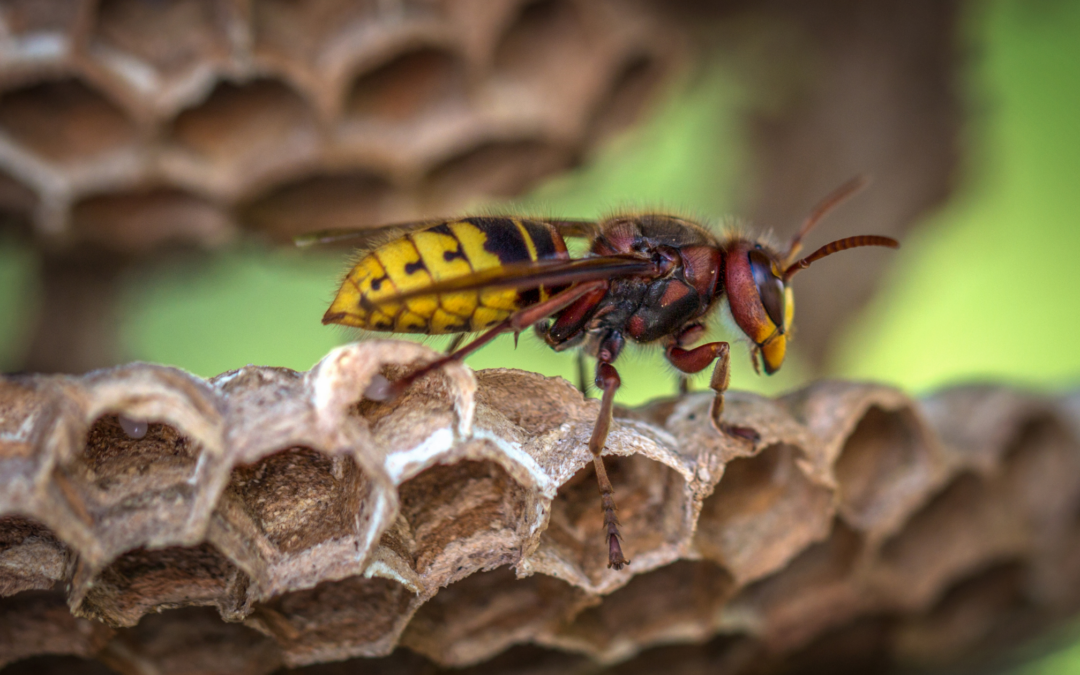
Georgia’s warm climate and lush landscapes make it a haven for various insects, including some that pack a painful sting. While many of these stinging insects play crucial roles in our ecosystem, encountering them in and around our homes can be alarming and potentially dangerous. In this guide, we’ll explore some of the most common stinging insects found in the region, the threats they pose, and how to deal with them effectively.
One of the most notorious stinging insects in Georgia is the yellow jacket. These aggressive insects are easily recognizable by their black and yellow striped bodies. They typically build their nests in hollow trees, underground burrows, or within wall voids of buildings. Yellow jackets can pose a significant threat to humans and pets, especially when their nests are disturbed. Their stings are painful and can cause allergic reactions in sensitive individuals.
Yellow jackets are about half an inch to three-quarters of an inch in length, with distinctive yellow and black markings on their bodies.
If stung by a yellow jacket, it’s essential to remove the stinger promptly to minimize venom injection. Clean the affected area with soap and water and apply a cold compress to reduce swelling. Over-the-counter antihistamines can help alleviate itching and discomfort.
Removing a yellow jacket nest can be hazardous and is best left to professionals. Attempting to remove the nest without proper equipment and expertise can provoke the colony, leading to aggressive behavior and more stings.
To prevent yellow jackets from nesting near your home, seal any openings in walls, windows, and doors. Keep outdoor garbage cans tightly sealed and promptly clean up any food spills or crumbs.
Paper wasps are another common stinging insect found in Georgia. They construct umbrella-shaped nests from a papery material, often hanging from eaves, tree branches, or shrubbery. While they are generally less aggressive than yellow jackets, they will defend their nests if threatened.
Paper wasps are slender with long legs and wings, typically brownish in color with yellow markings.
Treat paper wasp stings similarly to yellow jacket stings. Remove the stinger, clean the area, and apply a cold compress to reduce swelling.
If a paper wasp nest is located in a high-traffic area or poses a threat to residents, it’s advisable to contact a professional pest control company for safe removal.
Regularly inspect your property for signs of paper wasp nests, especially in the spring and summer months. Remove any existing nests during the winter to prevent reinfestation.
Hornets are another type of stinging insect that can cause concern for Georgia residents. These insects are larger than yellow jackets and paper wasps and often build their nests in trees, shrubs, or even on buildings.
Hornets have stout bodies with predominantly black coloring and white or yellow markings. Their nests are typically grayish and football-shaped.
Treat hornet stings similarly to other stinging insect stings. Remove the stinger, clean the area, and apply a cold compress to reduce swelling.
Due to the size and aggression of hornets, it’s best to leave nest removal to professionals. Attempting to remove a hornet nest without proper equipment and expertise can be dangerous.
Regularly inspect your property for signs of hornet activity, especially in secluded areas such as attics, sheds, and trees. Seal any openings or gaps in buildings to prevent hornets from entering.
In conclusion, encountering stinging insects in Georgia is not uncommon, but with proper knowledge and precautions, you can minimize the risks associated with them. If you’re dealing with a stinging insect infestation on your property, it’s best to seek assistance from a professional pest control company near you.
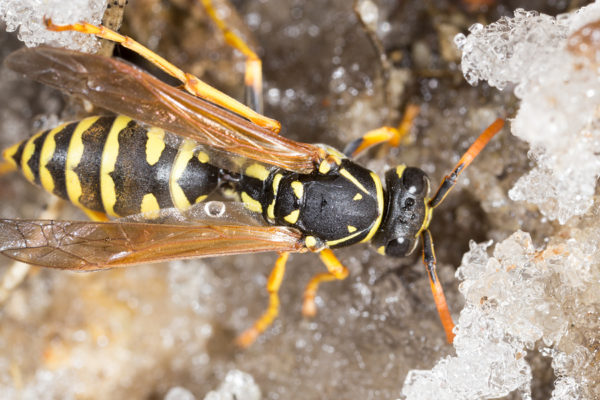
It’s the middle of December and you are cuddled up with your favorite book and a warm blanket. Unfortunately, this peaceful moment is interrupted by a buzzing sound followed by the sighting of a wasp! And while you might be thinking “This is odd! It’s winter!”, this occurrence is quite common.
As fall starts, paper wasps will start to die off. However, there are select females who will search for a safe place to overwinter. These safe places can be inside chimneys, behind the siding of your home, and around windows and door frames.
Since winter weather in the south is very unpredictable, bouncing from 20 degrees one week to 72 the next, that random warm weather can trigger the wasps to become active and search for exits to begin making nests; thus the cause of wasp sightings in the month of December. How can you prevent these wasps from overwintering?
If you spot a wasp in your home, don’t hit the panic button. In the winter months, wasps tend to move slower than normal and your licensed pest control professional can remove the nests with ease.
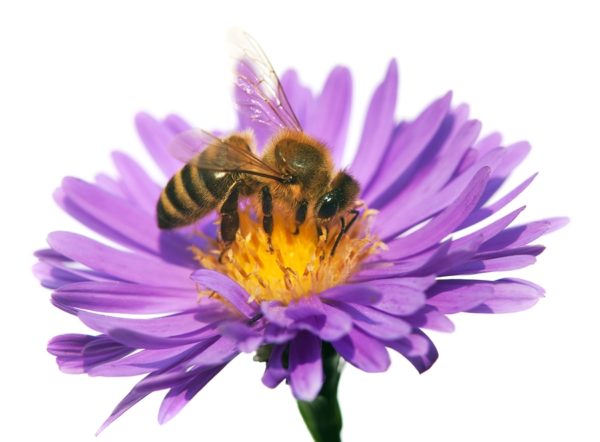
We’ve all been there before… you’re sitting in your house and you hear an incessant buzzing. All of a sudden something flies past your face! If you’re like most of us, your first thought it aghh! A bug in my house! Once you get over the initial shock of being dive bombed by this home invader, your next thoughts might be: What kind of bug is this? Is there more than one? How did it get in my house? How do I get rid of it? While we can’t answer all of your questions, we can help with a few. We’ve listed some of the most common flying pests below, as well as some tips to prevent them from getting into your home.
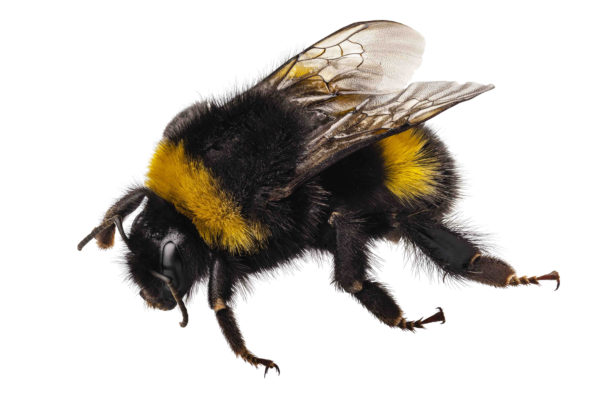
While there are several different species of bees in North America, we are going to look at bumblebees, honeybees, and carpenter bees.
Bumblebees are large, clumsy looking insects with oval shaped bodies. They are extremely fuzzy. They are yellow and black striped in color. They typically grow between 1/4″ and 1″ in length.
Honeybees are predominantly golden yellow with brown bands, but they can also be orange-brown in color. They have a very hairy appearance. They can grow to be about 1/2″ in length. They also have flat hindmost legs which are used to carry pollen.
Carpenter bees have a fuzzy body that is very robust in shape. Their bodies are yellow except for their abdomen which is shiny black. Males also have a white patch on their faces. Carpenter bees grow from 1/2″ to 1″ in length.
Bumblebees typically make their nests underground so their nests may not be visible. They will often make their nests in old mouse burrows or in dense clumps of grass. They have also been known to make their nests under woodpiles or behind the siding of homes. Bumblebees are found throughout the United States.
Honeybees typically make their nests in beehives, trees, hollow logs, and piles of logs. It is very common for them to get inside your home and nest in attics, wall voids, chimneys, and crawlspaces. Honeybees are found throughout the United States.
Carpenter bees create their nests in pieces of wood – preferably soft wood that has not been painted or sealed. They will often make their nests in decks, porches, roof eaves, wooden shingles, wooden playgrounds, in wooden outdoor furniture, and in sheds. The entry holes for carpenter bees are perfectly round.
All three species of bees feed on nectar and pollen from flowering plants. Contrary to popular belief, carpenter bees don’t actually eat the wood they burrow in to make their nests.
Female bumblebees have stingers but males do not. Bumblebees are not significantly aggressive but they will sting if they feel threatened. Their sting can be dangerous to humans with an allergy.
Honeybees are the only bee colonies that can survive for many years. They are very social insects. Female honeybees have stingers but males don’t. The female stinger is barbed which means it is only able to sting once. Honeybees aren’t known for being aggressive but they will sting if they are directly attacked.
Carpenter bees are very solitary insects and don’t create very large nest. Female carpenter bees have stingers but males don’t. Their sting is strong enough to cause a reaction in humans. Female carpenter bees are docile and rarely sting unless they are directly attacked. Male carpenter bees are very aggressive but don’t have stingers to do harm with.
All bees are protected as pollinators so treatment is only provided when they are deemed to be a nuisance or a threat. Removal is always the first treatment option because of this protected status.
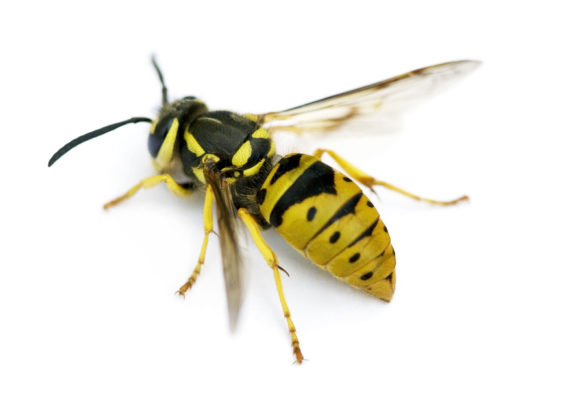
Yellow jackets have a sleek appearance. They are not fuzzy. They are black and yellow striped in color. They can grow to be 3/8″ to 5/8″ long.
Yellow jackets build their nests either high up or in the ground. Their elevated nests can be found in the walls of buildings or in attics and chimneys. Their ground nests are usually in areas that lack vegetation or in spaces next to the entrance of buildings.
Yellow jackets feed on other insects. They also eat any sweets and proteins that they come across. You can often find yellow jackets at outdoor events because they like to feed on sugary food scraps and drinks that are left out.
Yellow jackets have a smooth stinger which allows them to sting multiple times. They are usually docile unless their nests are approached. Then they become very aggressive and will sting repeatedly. Their sting can be life threatening if you are allergic. Yellow jackets are beneficial both as pollinators and because they help control the population of nuisance insects.
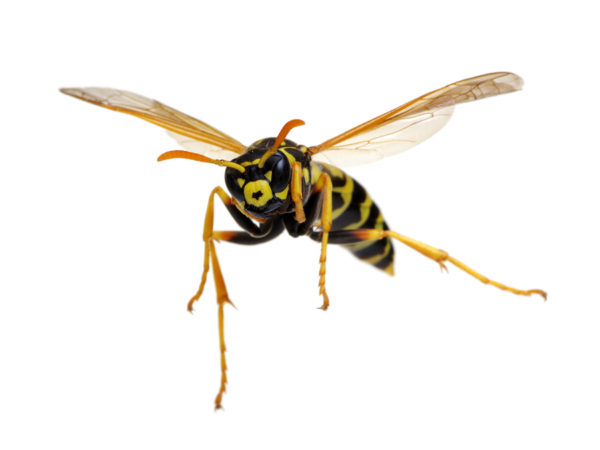
Paper wasps have a sleek appearance with a pinched waste and long, thin legs. They have gray wings and their bodies are black or brown with yellow or orange markings. Paper wasps can grow to be 5/8″ to 3/4″ in length.
Paper wasps are found throughout the United States. They will build their nests of the ground on any horizontal surface they can find. Their nests are commonly found hanging from trees, shrubs, porches, decks, roofs, outdoor grills, and door frames. Their nests resemble an umbrella attached by a stem. Their name comes from the paper-like nests that they build.
Paper wasps are predatory insects and feed on a wide variety of insects and spiders. They also eat nectar and pollen.
Paper wasps have smooth stingers that allow them to sting multiple times. They are not typically aggressive but will sting to defend their nests. Paper wasps have facial recognition capabilities like humans and chimpanzees do. They can actually recognize the faces of their colony members.
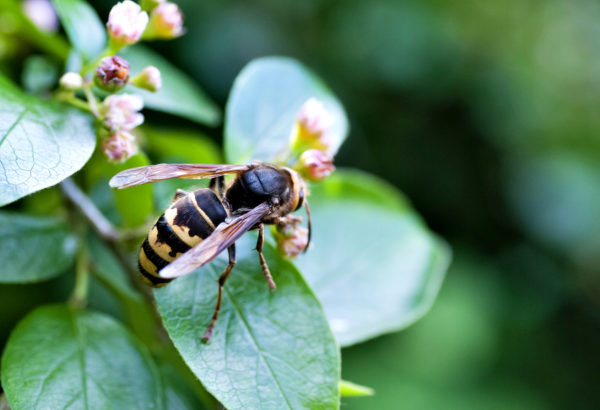
Hornets are much bigger than wasps. They are almost completely black except for an off white pattern on their face. They are long and thin with wasp-like bodies. They can grow from 3/4″ to 1-3/8″ in length.
Hornets are found throughout the United States. Hornet colonies only survive for 1 year. They build aerial nests that can be found in trees, on utility poles, on the side of homes, and under eaves. Hornet nests can be more than 14″ around and more than 24″ long.
Hornets are pollinators. Adults have a liquid diet that mostly consists of nectar and plant juices. They are also predatory and will prey on insects that they bring back to their nests to feed their larvae.
Hornets have a more painful sting than wasps do. A single hornet sting can be fatal if the victim is allergic. When hornets sting or feel threatened, they give off a pheromone that signals the rest of the colony to attack as well.
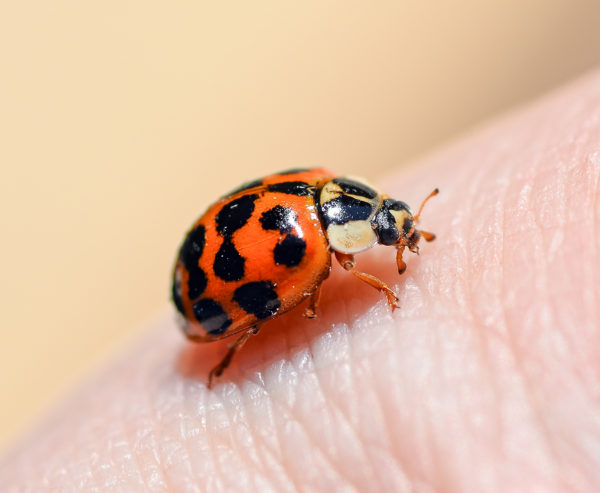
Ladybugs have a distinctive appearance. They are bright red, orange, or yellow with black spots. Their bodies are oval and dome shaped.
Ladybugs are found worldwide. There are over 5000 species total and 450 species in North America. Ladybugs live outside in gardens and landscaped areas. They aren’t able to tolerate cold weather so in the fall they will invade homes in search of a place to overwinter. They will typically gather on windowsills or you will see them crawling along walls. They tend to end up in attics, under flooring, and in wall voids.
Despite their appearance, ladybugs are predatory insects. They feed on a variety of other insects, helping to keep nuisance populations down.
Ladybugs secrete a substance wen they are threatened that makes them taste bad to their predators. They can also play dead if they feel threatened.
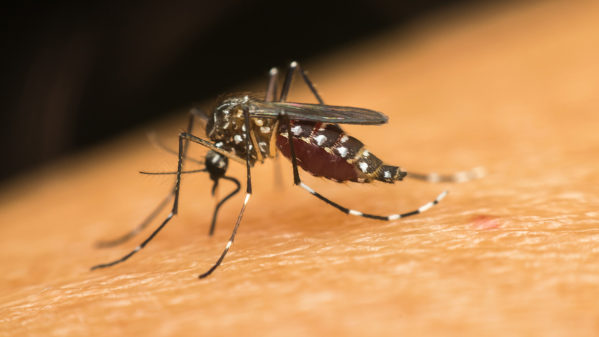
Mosquitoes have narrow bodies with long thin legs and transparent wings. They have gray bodies with white stripes on their abdomen. They also have long beaks that allow them to penetrate the skin. Mosquitoes can grow to be 1/4″ to 3/8″ long.
Mosquitoes can be found in almost every landscape environment on earth with the exception of deserts and the arctic. Mosquitoes are most often found near stagnant water as this is where they lay their eggs. They are often found on the edges of streams, lakes, and ponds; near wading pools; old tires; bird baths; tarps; piles of trash; clogged gutters; and wheelbarrows.
Mosquitoes feed on nectar and plant juices. Female mosquitoes bite to feed on blood.
The species of mosquito determines when they are most active. Some species are more active in the daytime while others become active at dark. Mosquitoes are capable of transmitting several diseases and pathogens to both humans and animals. Mosquitoes can transmit West Nile virus, Zika virus, Chikungunya fever, malaria, and canine heartworm among others.
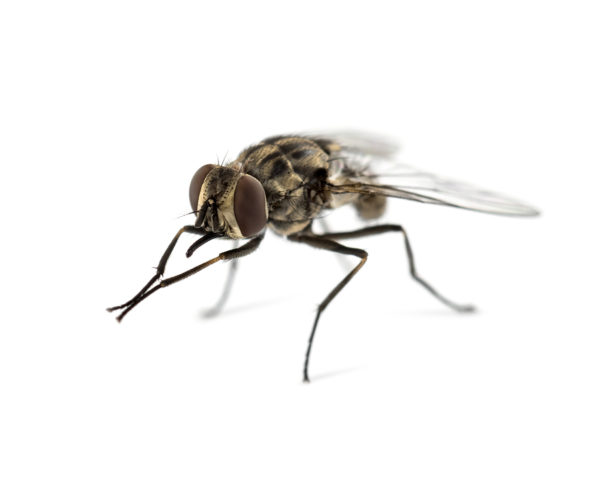
Houseflies have a very distinctive appearance. They have dull gray bodies with vertical lines on the top, a single gold stripe, and a silver stripe on their face. They can grow to be 1/8″ to 1/4″ in size.
Flies can be found in most homes. They enter through tears in screens, gaps around windows and doors, doors and windows that have been left open, and cracks in the foundation. They are attracted to homes by garbage, animal feces, compost piles, and leaky pipes. They will often rest on your floors, walls, and ceilings.
Houseflies are scavengers that eat a variety of different foods. They will feed on food found in pantries and kitchens, pet food, carcasses, garbage, or excrement. Houseflies are only able to eat liquids but they are able to turn many solid foods into liquid form so that they can eat it.
Houseflies can spread diseases when they land on your food or your food prep areas. They are the most common fly found in homes and only live from 15 to 25 days.
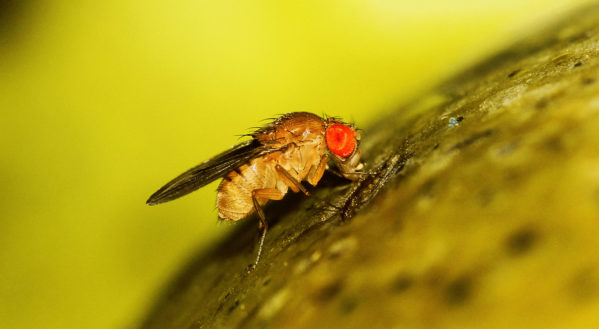
Fruit flies are extremely small in size, only getting about 1/8″ in length. They are usually brown, tan or black with distinctive red eyes. They are too small, however, for you to determine their color with the naked eye.
Fruit flies are found throughout the United States. They are usually seen in the kitchen, especially around fruits and vegetables. They live outside in spring and summer. They enter homes as hitchhikers on fruits and vegetables that we buy from stores that are already infested. They can also enter through small spaces in widows, doors, and walls. They are attracted by large gardens, compost piles, and fruit trees.
Fruit flies feed on very ripe fruits and vegetables like bananas, strawberries, melons, cucumbers, potatoes, and more. They also feed on fermented liquids like vinegar, cider, and beer.
Fruit flies are a nuisance. They enter your home in large numbers and are very difficult to eliminate. They can carry dangerous that can be transmitted to humans.
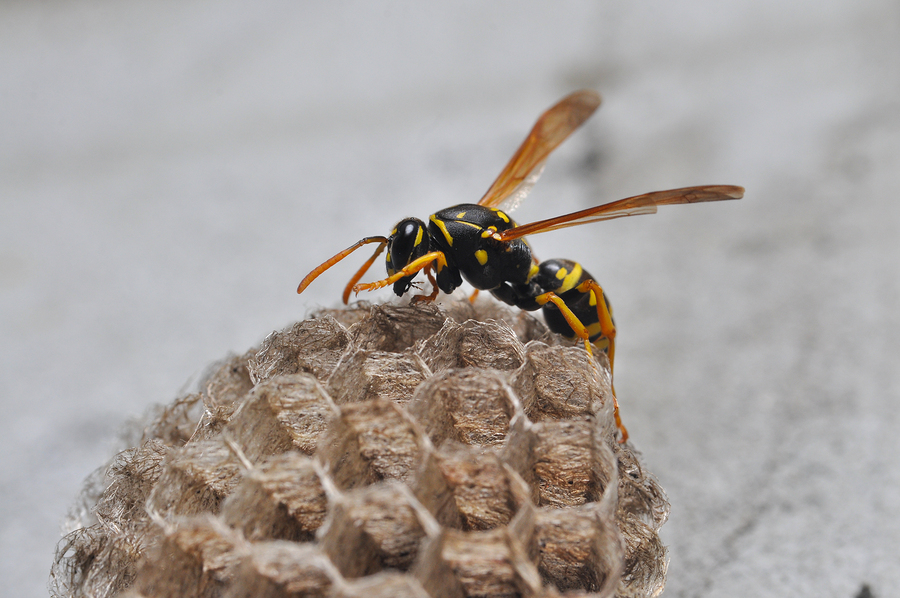
Paper wasps can be a nuisance during the summer. While they do not set out to sting intentionally, they will if they feel threatened. Their narrow bodies are most commonly dark brown in color, with black wings and yellow markings. Some even appear similar to yellow jackets in coloration. Here are some facts on paper wasps!
Removing a paper wasp nest can be a dangerous task. It is advised to proceed with caution if you encounter a nest and contact a pest control company to assist with the removal of the nest.